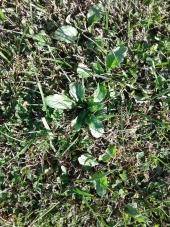I'm new to this community, but not to permaculture and thank you in advance for your advice and feedback! We're currently building a house on five acres outside of Kalispell, Montana and the soil isn't just rocky, it's all rock! No real soil to speak of. While I want to give it a year or so before I dig into the overall plan, the septic drain field is being installed in a few weeks which occurs to me has both its benefits and drawbacks.
It's going into a large flat area that is the main view from the house and, since it's the drain field, I'm thinking it would make a nice native wildflower meadow since we can't put food producing plants there.
So, we have the opportunity while the soil is disturbed to do...something. If we don't, we'll likely get a bunch of oxeye daisy and knapweed germinating due to the disturbed soil, which is incredibly invasive here and will have to be dealt with later. But I'm afraid that simply adding
compost or topsoil will just get washed away through the well draining gravel in the coming year and I'm not finding a ton of info online (other than one other thread here about reclaiming a gravel pit) about how people have dealt with this.
Any thoughts? Perhaps a layer of heavier mulch like wood chips and straw to suppress the weeds before adding compost to germinate wildflower seeds in the fall? The attached photo isn't the exact location but is indicative of the soil on most of the property.









